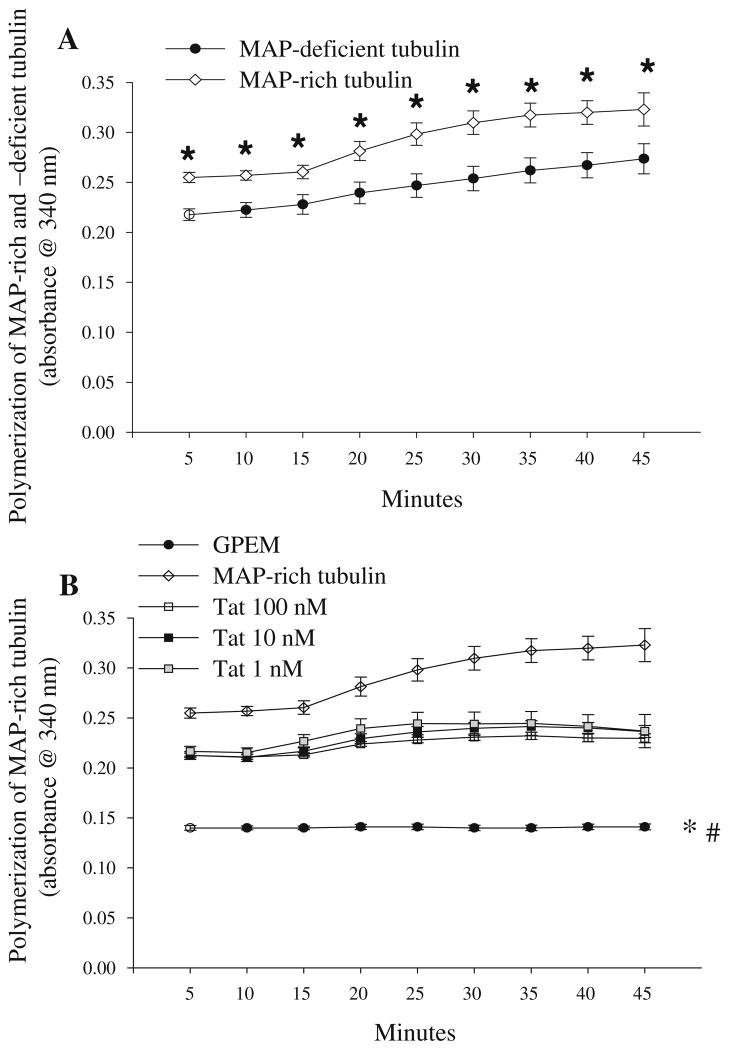Fig. 3.
a The presence of pre-bound MAPs significantly increased polymerization of purified bovine brain tubulin at all timepoints measured; *Ps<0.05 vs. MAP-deficient tubulin. b Exposure to the two highest concentrations of Tat(1-86) (10 and 100 nM) impairs polymerization of MAP-rich bovine brain tubulin at every timepoint (Ps<0.01), though all concentrations of Tat(1-86) (1–100 nM) impaired polymerization of MAP-rich bovine brain tubulin beginning at the 25 min timepoint. a *P<0.05 vs. MAP-deficient tubulin; b *P<0.01 vs. Tat(1-86) (10 and 100 nM) and MAP-rich tubulin for all timepoints; #P<0.01 vs. all concentrations of Tat(1-86) beginning at the 25 min timepoint and MAP-rich tubulin

